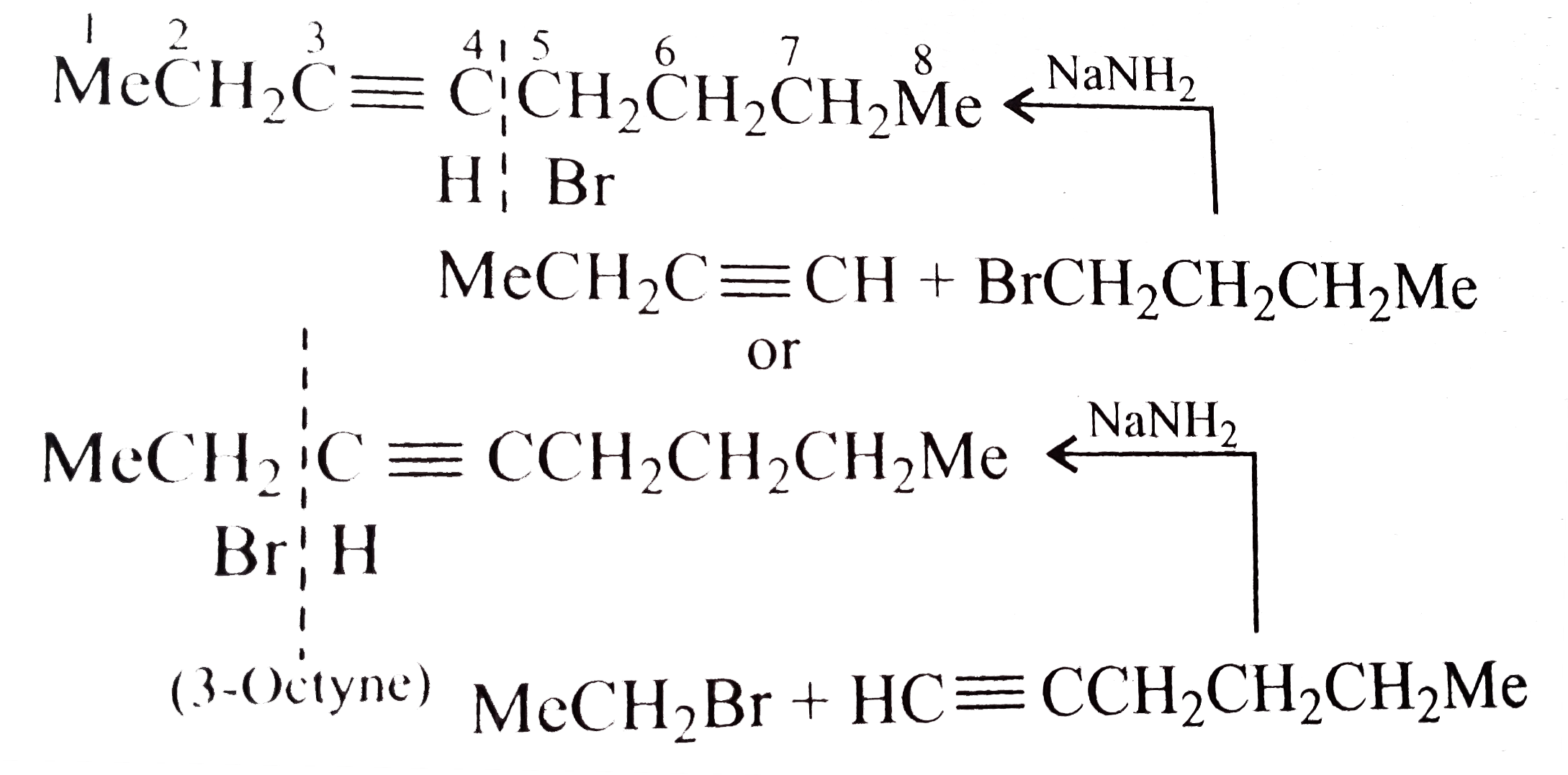The synthesis of 3-octyne is achieved by adding a bromoalkane into a mixture of sodium amide and alkyne. The bromoalkane and alkyne, respectively, are
(a) BrCH2CH2CH2CH2CH3 and CH3CH2C≡CH
(b) BrCH2CH2CH3 and CH3CH2CH2≡CH
(c) BrCH2CH2CH2CH2CH3 and CH3C≡CH
(d) BrCH2CH2CH2CH3 and CH3CH2C≡CH
The correct Answer is:B
Topper's Solved these Questions
- BOOK - CENGAGE CHEMISTRYCHAPTER - ALKYNESEXERCISE - Exercises (Archives - Fill in the Blanks Type)3videos
ALKYNES
- BOOK - CENGAGE CHEMISTRYCHAPTER - ALKYNESEXERCISE - Exercises (Archives - Analytical and Desriptive Type)4videos
ALKYNES
- BOOK - CENGAGE CHEMISTRYCHAPTER - ALKYNESEXERCISE - Exercises (Single Correct Answers Type)30videos
ALKYNES
- BOOK - CENGAGE CHEMISTRYCHAPTER - ALKENES AND ALKADIENESEXERCISE - Single correct Answer14videos
ALKENES AND ALKADIENES
- BOOK - CENGAGE CHEMISTRYCHAPTER - APPENDIX - INORGANIC VOLUME 1EXERCISE - chapter-7 Single correct answer1videos
APPENDIX - INORGANIC VOLUME 1
Similar Questions
Alkenes and alkynes are unsaturated hydrocarbons and undergo electrophilic addition reactions. In alkenes, the addition occurs in one step while in alkynes the addition occurs in two steps. Alkenes show geometrical isomerism but alkynes do not. Alkynes are more acidic than alkenes which are more acidic than alkanes. Both alkenes and alkynes can be prepared by the electrolysis of sodium or potassium salts of carboxylic acids.
Write the major product of the reaction :
(CH3)3C−CH=CH2HBr−−→View SolutionAlkenes and alkynes are unsaturated hydrocarbons and undergo electrophilic addition reactions. In alkenes, the addition occurs in one step while in alkynes the addition occurs in two steps. Alkenes show geometrical isomerism but alkynes do not. Alkynes are more acidic than alkenes which are more acidic than alkanes. Both alkenes and alkynes can be prepared by the electrolysis of sodium or potassium salts of carboxylic acids.
Which of the following reacts with [Cu(NH3)2]OH ?
(i) But-1-yne (ii) But-2-yne (iii) But-1-eneView Solution
Knowledge Check
- Question 1 - Select One
The synthesis of 3-octyne is achieved by adding a bromoalkane into a mixture of sodium amide and an alkyne. The bromoalkane and alkyne, respectively, are
ABrCH2CH2CH2CH3andCH3CH2C≡CHBBrCH2CH2CH3andCH3CH2CH2C≡CHCBrCH2CH2CH2CH2CH3andCH3C≡CHDBrCH2CH2CH2CH3andCH3CH2C≡CH - Question 2 - Select One
The synthesis of 3-octyne is achieved by adding a bromoalkane into a mixture of sodium amide and an alkyne. The bromoalkane and alkyne, respectively, are
ABrCH2CH2CH2CH3andCH3CH2C≡CHBBrCH2CH2CH3andCH3CH2CH2C≡CHCBrCH2CH2CH2CH2CH3andCH3C≡CHDBrCH2CH2CH2CH3andCH3CH2C≡CH - Question 3 - Select One
The synthesis of 3-octyne is achieved by adding a bromoalkane into a mixture of sodium amide and an alklyne. The bromo alkane and alkyne respectively are:
ABrCH2CH2CH2CH2CH3 and CH3CH2C≡CHBBrCH2CH2CH3 and CH3CH2CH2C≡CHCBrCH2CH2CH2CH2CH3 and CH3CH2C≡CHDBrCH2CH2CH2CH3 and CH3CH2C≡CH
Alkenes and alkynes are unsaturated hydrocarbons and undergo electrophilic addition reactions. In alkenes, the addition occurs in one step while in alkynes the addition occurs in two steps. Alkenes show geometrical isomerism but alkynes do not. Alkynes are more acidic than alkenes which are more acidic than alkanes. Both alkenes and alkynes can be prepared by the electrolysis of sodium or potassium salts of carboxylic acids.
Write the major product of the following reaction :
CH3C=CH+H2OHg24−−−−−→dil.H2SO4View SolutionThe synthesis of 3-octyne is achieved by adding a bromoalkane into a mixture of sodium amide and an alklyne. The bromo alkane and alkyne respectively are:
View SolutionThe synthesis of compound 3-octyne is achieved by adding a bromoalkane into a mixture of sodium amide and the alkyne. The bromoalkane and the alkyne are respectively.
View Solution3-Octyne is synthesized by adding a bromoalkane in a mixture of sodium amide and an alkyne. The bromoalkane and alkyne are respectively.
View SolutionThe simplest chiral alkane, alkene, alkene and alkyne posses carbon atoms respectively.
View Solution



